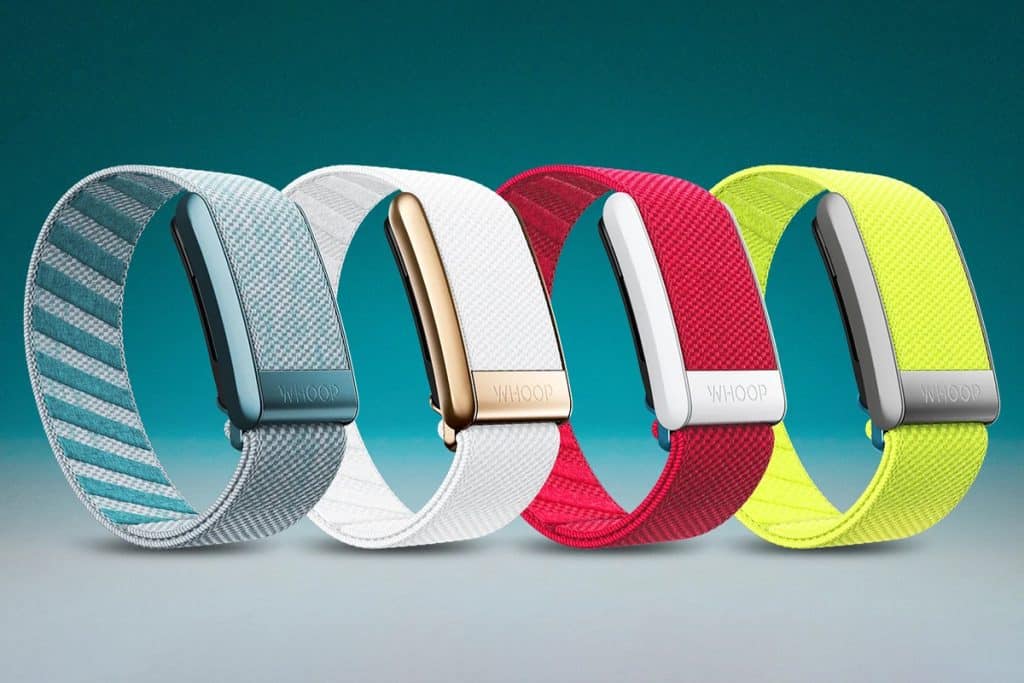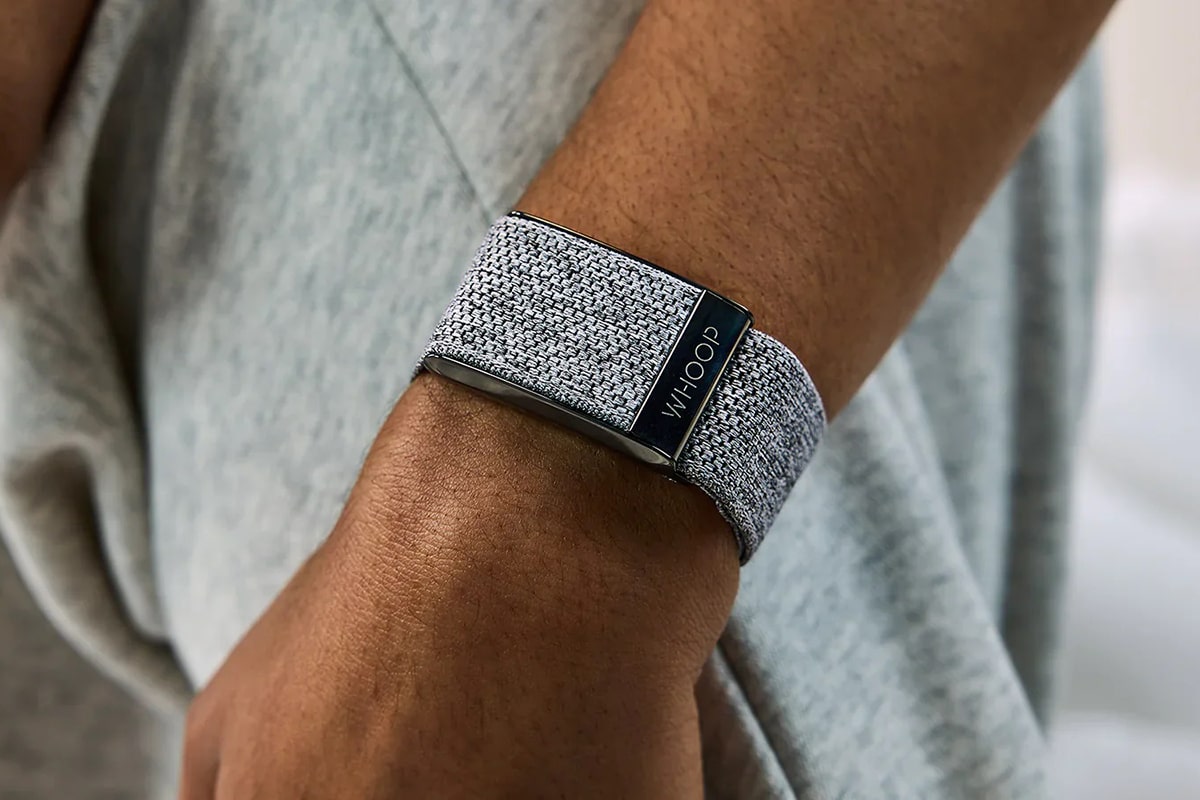After dedicating a full month to wearing the WHOOP 4.0, I’ve come to a realisation: this isn’t your run-of-the-mill fitness tracker.
As someone who enjoys staying active but isn’t exactly training for the Olympics, I found myself constantly questioning whether this device is truly suited for the average fitness enthusiast.
Let’s dive deep into what makes the WHOOP 4.0 stand out, for better or worse.
| The good | The not so good |
|---|---|
| Accurate recovery and strain tracking | No screen for quick stats |
| Comprehensive sleep analysis | Requires frequent phone checks |
| Comfortable, unobtrusive design | Limited real-time workout feedback |
| Lightweight and waterproof | Expensive subscription model |
| Long battery life and innovative charging solution | May be overkill for casual users |
| Holistic health monitoring | No built-in GPS |
| Intuitive companion app | No step count |
| Extensive data export options | Steep learning curve for data interpretation |
| Highly personalised | Lacks basic fitness tracker features |
The good
The WHOOP 4.0 excels at what it sets out to do – tracking recovery and strain, insights which I believe would be particularly useful for serious athletes.
The device uses a proprietary algorithm to calculate a daily strain score (0-21) based on cardiovascular load and a recovery score (0-100 percent) that considers resting heart rate, heart rate variability, and sleep performance.
During my testing, I found these metrics to be surprisingly accurate and unrivalled – there’s nothing quite as comprehensive as this in the market. On days when I felt particularly tired, my recovery score was indeed lower, and the strain score accurately reflected the intensity of my workouts. This level of insight could be game-changing for those who are serious about optimising their training and avoiding overexertion.
The sleep tracking is nothing short of impressive. It offers detailed breakdowns of sleep stages and quality, going far beyond the basic sleep duration tracking found in many other devices. It not only tracks time spent in light, deep, and REM sleep but also factors in sleep consistency and efficiency.
One feature I particularly appreciated was the sleep coach, which recommends optimal bedtimes based on your recent strain and sleep debt. This personalised approach to sleep optimisation felt genuinely helpful, especially during weeks when my schedule was hectic.

I was initially sceptical about wearing a screenless fitness tracker 24/7, but the WHOOP 4.0’s design quickly won me over. At just 1 inch wide and weighing a mere 1 ounce, it’s remarkably unobtrusive and comfortable enough to wear all day and night. The lack of a screen contributes to its sleek appearance and makes it look more like a stylish wristband than a tech gadget.
The waterproof construction (up to 10 metres for 2 hours) means you never have to take it off, even while swimming or showering. This continuous wear is crucial for the device’s monitoring approach, ensuring you never miss a beat in your health tracking.
The battery life of the WHOOP 4.0 is a standout feature, lasting about four to five days on a single charge. This is particularly impressive given its 24/7 monitoring capabilities. But what really sets it apart, in my opinion, is the portable battery pack and its clever charging solution.
The battery pack can be slid onto the device while you’re wearing it, allowing you to charge on the go without interrupting data collection (though it might overheat a little bit). This unique approach to charging meant that I never had to worry about taking off the device and potentially missing out on valuable data.
Beyond just activity tracking, the WHOOP 4.0 offers a more comprehensive approach to health monitoring. It measures respiratory rate, blood oxygen levels, and skin temperature, giving you a more holistic approach to your health.
During my testing period, I found the respiratory rate tracking particularly interesting. While I thankfully didn’t experience any health scares, knowing that the device could potentially detect early signs of respiratory issues added an extra layer of reassurance for me.
The companion app is well-designed and very intuitive, presenting complex data in an easily digestible format. I appreciated how it broke down my daily and weekly performance with insights into how various factors affected my recovery and strain.
The ability to log activities, food intake, and other lifestyle factors helps provide context to the physiological data. Over time, I began to see patterns emerge between my habits and my performance metrics, which was genuinely enlightening.
For those who love to dive deep into their data, WHOOP offers extensive data export options. It also integrates with popular platforms like Strava and Apple Health which makes it easier to consolidate your fitness data across multiple platforms.

The not-so-good
While the screenless design contributes to the WHOOP 4.0’s sleek appearance and extended battery life, it’s also one of its biggest drawbacks. I found myself constantly reaching for my phone to check my stats, which became tedious over time. For those used to glancing at their wrist for quick updates on steps, time, or notifications, this might be a significant adjustment. I began to understand why many people who use the WHOOP often wear another wearable or smartwatch on their other wrist.
The absence of a screen also means you can’t get real-time feedback during workouts without pulling out your phone, which can be inconvenient, especially during outdoor activities.
While the device excels at tracking recovery and overall strain, I found its post-workout statistics less comprehensive than other fitness devices I’ve used. After a workout, I missed being able to quickly check familiar metrics like calories burned, intensity minutes, or steps taken – data points that I’ve come to rely on with other trackers to properly gauge the effectiveness of my exercise sessions.
But I believe the biggest hurdle for many potential users will be the subscription model. After the initial free period, the annual membership cost of $239 feels steep, especially when compared to other fitness trackers that offer similar features without/cheaper ongoing fees.
This pricing structure might be justifiable for professional athletes or serious enthusiasts who can make use of the highly-advanced insights to improve their performance. However, for the average user looking to stay fit and healthy, it’s a considerable investment that may be hard to justify.
For the average person looking to track steps, calories, and basic sleep patterns, the WHOOP might be overkill. Its focus on recovery and strain is impressive but potentially unnecessary for those not engaged in intensive training regimens.
The absence of built-in GPS and the lack of step counting might also be deal-breakers for some users. If you’re someone who motivates yourself by hitting a daily step goal, you’ll need to look elsewhere or use a second device.
While the data provided is comprehensive, interpreting it and making meaningful changes to your routine requires a level of commitment and understanding that casual users might find overwhelming. During my first week with the device, I often found myself wondering how to act on the information I was receiving.
It took time to understand how to balance my strain and recovery scores effectively. For those not used to this level of data analysis in their fitness routine, there might be a significant learning curve.

The verdict
After a month of use, I’ve concluded that the WHOOP 4.0 is a niche product best suited for serious athletes or those deeply invested in optimising their performance and recovery. Its advanced metrics, continuous monitoring, and focus on recovery make it a powerful tool for those pushing their physical limits.
The device shines in its ability to provide detailed insights into recovery, sleep, and overall strain on the body. For athletes looking to fine-tune their training and avoid overtraining, the WHOOP 4.0 could be an invaluable tool. However, for the average fitness enthusiast, the subscription cost and the specialised focus might not justify the investment.
In the end, whether the WHOOP 4.0 is worth it depends entirely on your fitness goals and how much you value the specific data it provides. For elite athletes, data-obsessed fitness buffs, or those dealing with specific health concerns, it could be a game-changer.
For the rest of us – those who enjoy staying active but aren’t training for major competitions – there might be more suitable and cost-effective options out there. While the WHOOP 4.0 offers an impressive array of features and insights, its specialised focus and subscription model may be more than what the average fitness enthusiast needs or wants to invest in.
Ultimately, my month with the WHOOP 4.0 left me impressed with its capabilities but questioning its necessity for my personal fitness journey. It’s a powerful tool, no doubt, but one that may be best suited for those who can fully gain from its advanced features and are willing to commit to both the financial cost and the time investment required to make the most of its insights.










